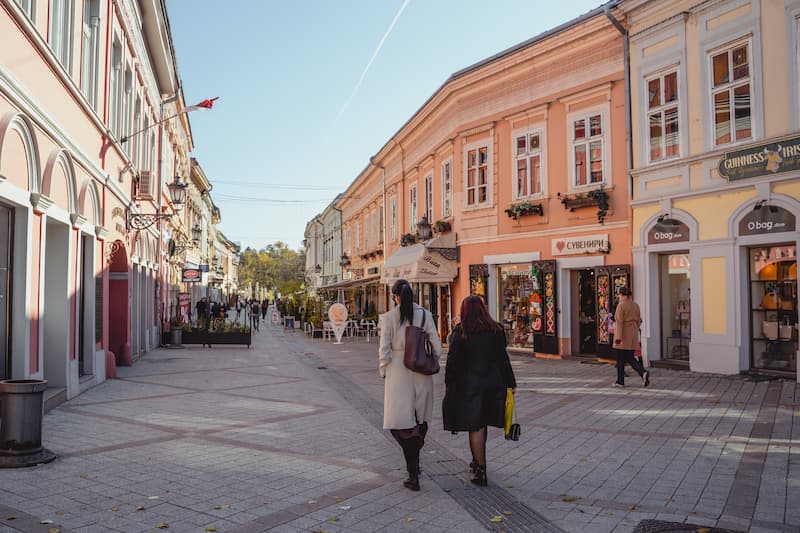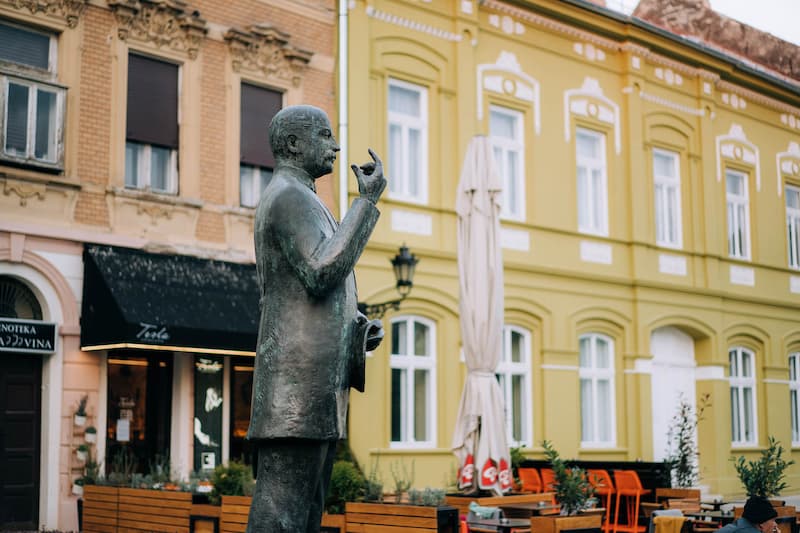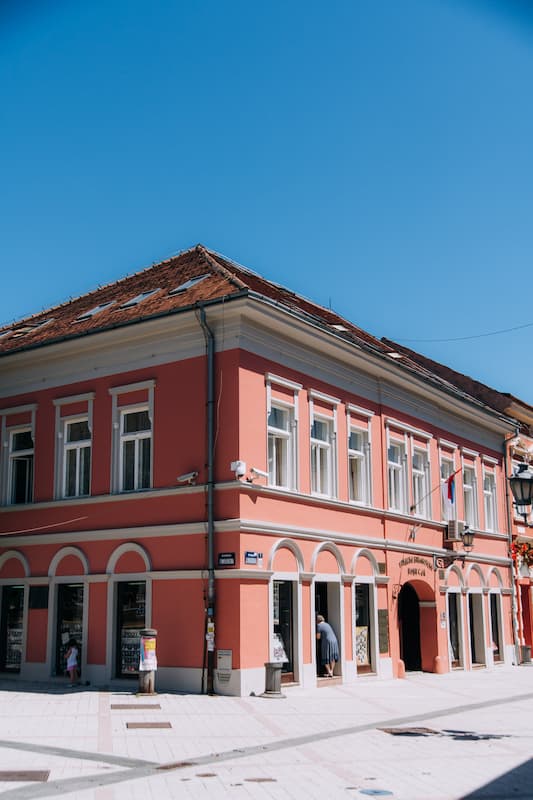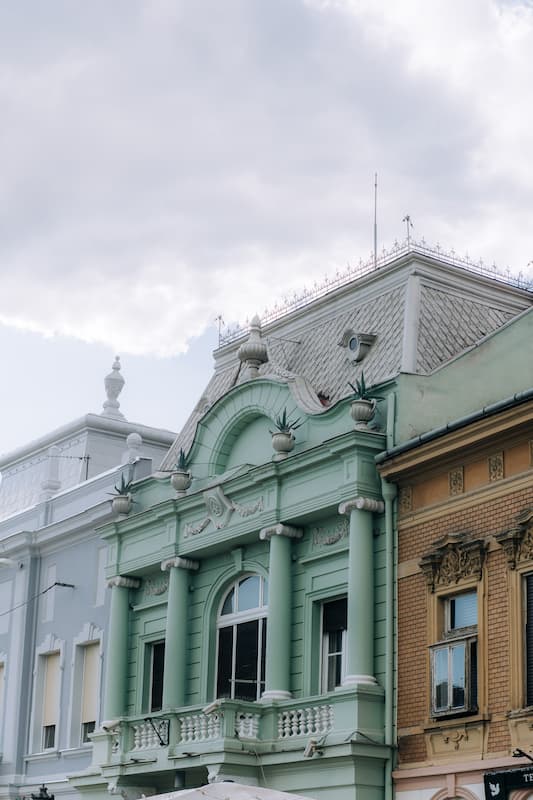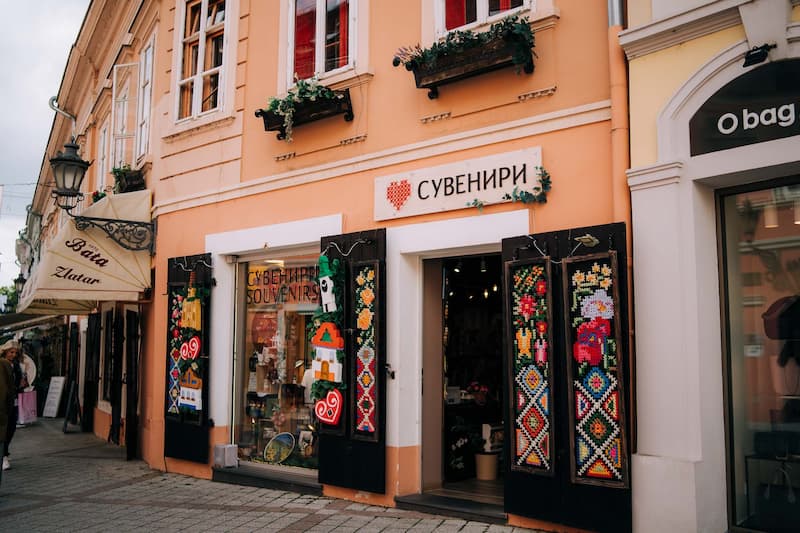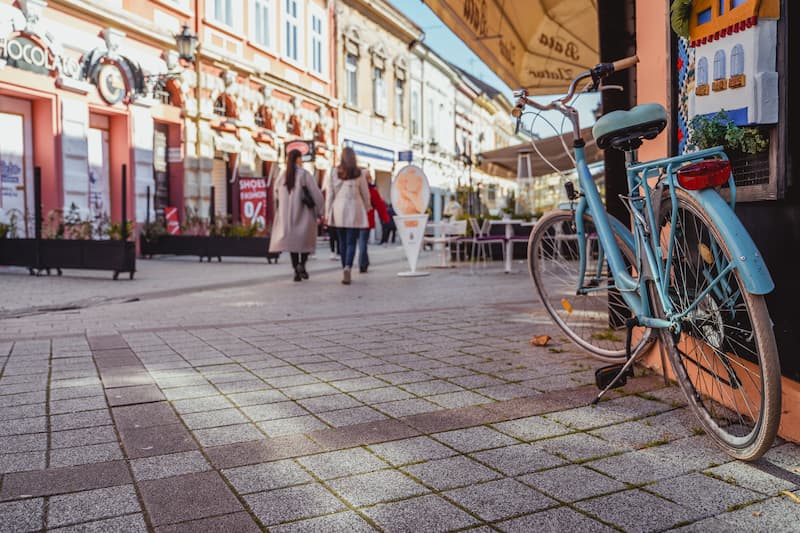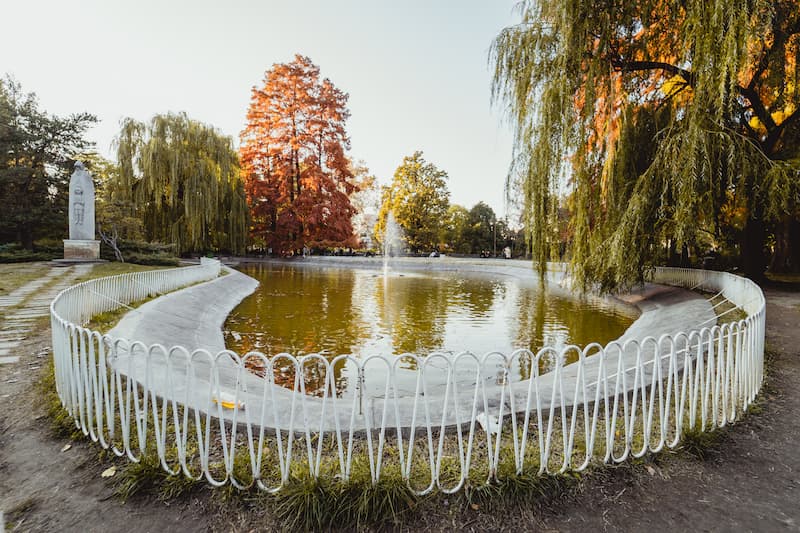Every city has its own unique street whose rich past determines its historical, social, and cultural significance. For Novi Sad, it is certainly one of the two oldest streets in Novi Sad – Danube Street (Dunavska ulica). Whether it is, in fact, the oldest, or is it the Zlatne Grede Street in the immediate vicinity, we’ll probably never know… Danube Street connects the Danube riverbank and Zmaj Jovina Street and is one of the favourite promenades of the people of Novi Sad and tourists, who also like to stop by the Danube Park. At its top is the famous City Library of Novi Sad, and in addition to it, it is also adorned with the iconic Irish Pub, souvenir shop Souvenirs, beautiful pastry shops, a monument to Jaša Tomić, as well as three museums – the Collection of Foreign Art of the Museum of the City of Novi Sad, the Museum of Vojvodina, and the Museum of Contemporary Art. And you will probably only hear from Novi Sad residents that this street is pronounced ‘DunAvska’, instead of ‘DUnavska’. And that is something that is typical of Novi Sad. We bring you the story of the origin of this important street in Serbian Athens.Kako je nastao naziv Dunavska ulica?
How Did the Name Danube Street Come About?
The street came to be at the beginning of the 18th century in the former town of Racka (the old name for Novi Sad), connecting the city centre with the Danube. At first, it was called Petrovaradin Street, because it led to the Bridgehead and Petrovaradin, and then Auf den Brucken, i.e., the Bridge Street. It was actually an embankment or a dry beam between two ponds. By the end of the 18th century, with the strengthening of the economic power of the citizenry, the first buildings made of solid material were erected and the street took its shape. Its Serbian name Dunavska ulica or Dunavski sokak originates from that time, i.e., Donau Gasse in German, or Duna utca in Hungarian.
Danube Alley
Before the 1848 Rebellion, this alley resembled a Turkish town with a pronounced oriental spirit. Among others, Novi Sad was founded by merchants and artisans originating from the Turkish regions of the Balkans. Here they built houses of a typical oriental/Balkan type, with shops or craft workshops on the street side, which was overlooked by ćepenci – eastern-styled windows with shutters. The one-story courtyard buildings stretched behind the store along the courtyard and people lived and stored their goods in them. The streets were narrow and winding, covered with eaves of houses almost touching in the middle. When it was raining, you could walk the entire length of Danube Street over dry ground. Mihajlo Polit Desančić, a famous politician, journalist, and writer writes in his ‘Memories’ about Novi Sad: ‘It was a semi-oriental and patriarchal town. People sat on benches in front of houses, writers argued their points there, merchants and artisans sat in front of their shops in oriental clothes, with shallow shoes on their feet and pipes in their mouths, speaking in Greek.’
Danube Street had a favourable position because it connected all the central streets with the market, and through it with the Danube and then Srem. This alley was also known for several brothels, which represented a nuisance to more morally upright citizens. Archaeologists found the remains of a Turkish bath from the 18th century in the yard of a house on this street. The entire century-old urban heritage, including these oriental Balkan-type houses built mainly of wood, perished in the bombing of Novi Sad on 12 June 1849.
Novi Sad was soon to become the largest construction site in the Habsburg Monarchy. Palaces in modern European styles were built on Danube Street for the wealthiest and most famous citizens. It became a street of large traders with various grocery shops, inns, bookstores, and printing houses.
House ‘At the White Lion’
It is considered the oldest preserved house in Novi Sad. This is a one-story house on the corner of Danube Street and 28 Zmaj Jovina Street, across from the Bishop’s Palace. It was mentioned for the first time in 1720, as ‘the house of the soap maker Stojan Maslak’, but it is assumed that it was built at the beginning of the 18th century. On the left wall of the carriage passage of this house, there is still a well with a wheel. This is a construction rarity because not a single similar case has been recorded in this region. The house ‘At the White Lion’ was damaged in the Rebellion of 1849, but was not completely demolished and was later rebuilt.
From the Printing House to the City Library
Today’s one-story building at 1 Danube Street dates from the second half of the 18th century and was rebuilt after the Rebellion. It was where in 1870 Jovan Subotić, PhD housed his printing press, and in 1876 the house was bought by the bookseller and publisher Arsa Pajević, who printed Jovan Jovanović Zmaj’s magazines Neven, Starmali, and Javor here. The greatest Serbian comedian Branislav Nušić also lived here while he was the director of the Serbian National Theatre. Pajević’s house was a gathering place for writers and cultural and public workers of that time. Since 1885, the first floor housed the Serbian Reading Room. The building passed into public ownership in 1958. and today it houses the City Library.
Who Lived in Danube Street
A cannonball from the time of the bombing still stands on the facade of the house with number 2. House number 5 belonged to the famous Polit-Desančić family. In 2012, at 9 Danube Street, the famous Đorđević Bakery located since 1903 in a house built in 1886 was closed. Another resident of Danube Street was Josif Singer, the court photographer of the Montenegrin King Nikola. On his house, at number 12 there was the coat of arms of the Kingdom of Montenegro. The headquarters of Matica Srpska, when it moved from Budapest to Novi Sad (1865-1899), was at 14 Danube Street. This house is still best known for its owner, Svetozar Miletić. Jaša Tomić also lived there after marrying Miletić’s daughter Milica. Đorđe Ivković‘s bookstore and printing house were located at the neighbouring number 16. The philanthropist Marija Trandafil was also mentioned as the owner of this house. In the house at number 21 was the bohemian tavern ‘The Black Goat’. Vasa Pelagić, who lived upstairs, was arrested here and taken to prison. Today, the tavern ‘Ribar’ is located in this house. The famous tavern ‘At the English Queen’s’, built right before the Rebellion, was demolished around 1898. Today’s Museum of Vojvodina was built in its place.
Danube Park
At the end of the 19th century, the area of today’s Danube Park was cleared out. There used to be a liman, a branch of the Danube that became a pond, overgrown with reeds and willows, a breeding ground for mosquitoes and frogs. This area was filled with earth and the only pond left at the lowest elevation, at 76 m above sea level, was later walled off. This is how today’s lake in the Danube Park was created, with a small island, called Erzsébet (Jelisaveta), on which a weeping willow tree was planted in memory of the Austrian Empress killed in 1898.
The Name Danube Street – Only After the War
Danube Street got its first lanterns with street lighting in 1846, while the lighting of city streets began to be systematically introduced in Novi Sad only in the second half of the 19th century. Between the two world wars, the street was named after Jaša Tomić. During World War II, the Hungarians changed the name to Dr László Bárdos Street, and the name Danube Street was finally established after 1944. Another characteristic of this street is reflected in the way its name is pronounced. Namely, the name ‘Danube’ is accented differently when you live in Novi Sad for a little longer, and differently when you are not from Novi Sad. As a rule, the ‘u’ in the first syllable should be accented, but the people of Novi Sad stretch this word and accent the ‘a’ in the second syllable. Maybe it’s not proper pronunciation, but that’s just how it is.
Author: Ljiljana Dragosavljević Savin, MSc, historian
Photo: Jelena Ivanović, Vladimir Veličković

